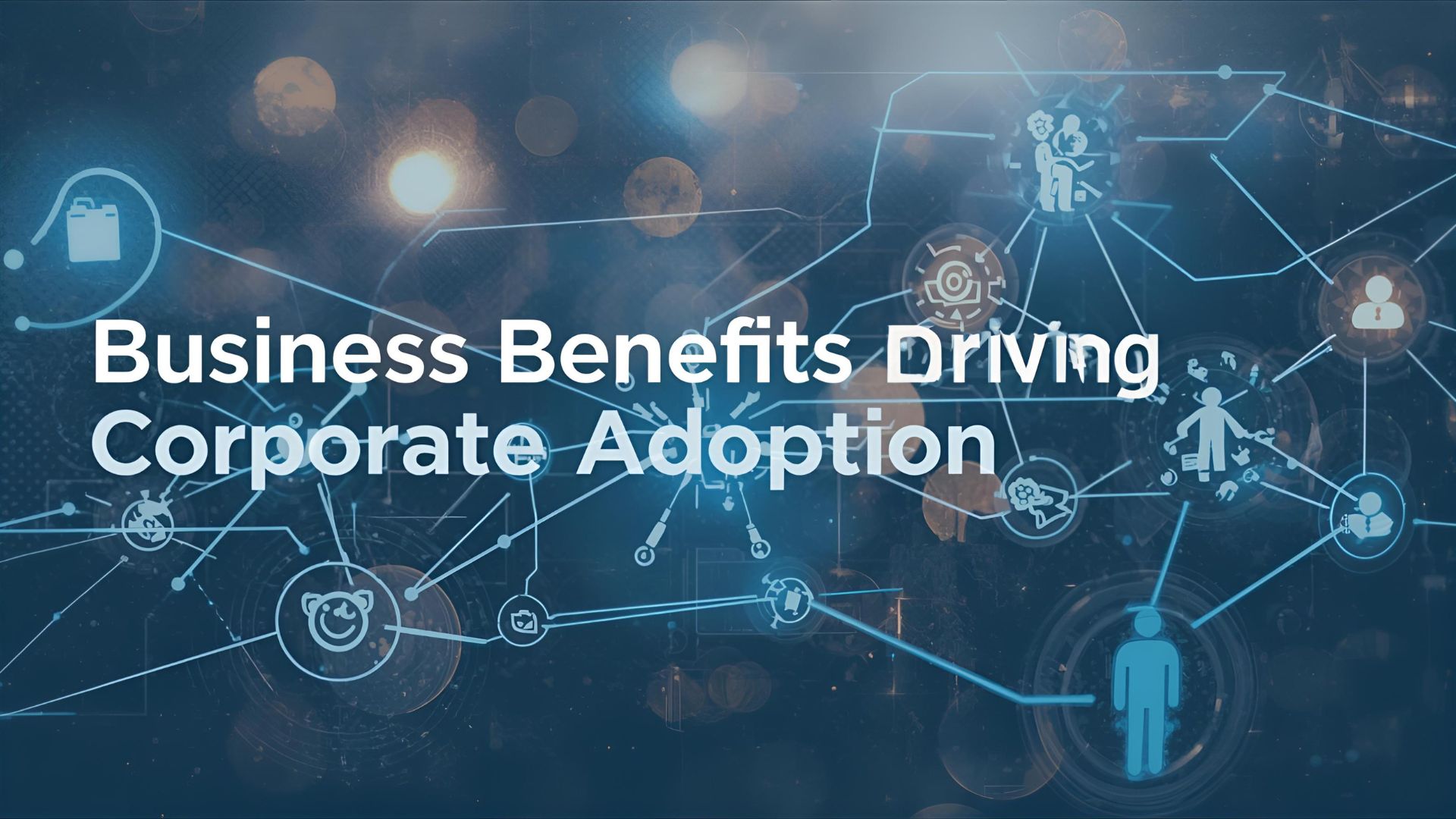Blockchain in global finance has transitioned from a fringe technology associated primarily with cryptocurrency enthusiasts to a foundational infrastructure powering some of the world’s largest financial institutions. Major banks like JPMorgan Chase, Goldman Sachs, and HSBC are now leveraging distributed ledger technology for cross-border payments, securities settlement, and trade finance. Central banks across 130 countries are actively developing or piloting central bank digital currencies (CBDCs), while the tokenization of real-world assets has unlocked trillions in previously illiquid markets. This remarkable transformation represents not just technological evolution, but a fundamental reimagining of how value moves through our global economic system.
The Journey from Experimental to Essential
Early Skepticism and Resistance
When Bitcoin emerged in 2009, traditional financial institutions dismissed blockchain technology as a solution in search of a problem. Banking executives questioned why distributed ledger systems would be necessary when centralized databases worked efficiently. Regulatory uncertainty, scalability concerns, and association with illicit activities created significant barriers to mainstream adoption. Major financial publications ran skeptical headlines, and prominent economists criticized cryptocurrencies as speculative bubbles with no intrinsic value.
However, a small group of forward-thinking institutions began experimenting with private blockchain networks. R3’s Corda platform, launched in 2015, specifically targeted financial services use cases. The Hyperledger project, backed by the Linux Foundation, created enterprise-grade frameworks that addressed many concerns about public blockchains. These early pilot programs demonstrated that blockchain in global finance could solve real problems around settlement times, reconciliation costs, and transparency.
The Turning Point: Institutional Adoption
The period between 2020 and 2024 marked a critical inflection point. Several factors converged to accelerate mainstream adoption of distributed ledger technology in financial services:
Regulatory Clarity: Jurisdictions including the European Union, Singapore, Switzerland, and the United Arab Emirates established comprehensive frameworks for digital assets. The EU’s Markets in Crypto-Assets (MiCA) regulation provided legal certainty that encouraged institutional participation. In the United States, despite ongoing debates, regulatory guidance has gradually improved, allowing major banks to offer cryptocurrency custody services.
Technological Maturation: Second and third-generation blockchain platforms addressed scalability limitations that plagued earlier systems. Layer-2 solutions, sharding techniques, and more efficient consensus mechanisms enabled transaction throughput comparable to traditional payment networks. Interoperability protocols allowed different blockchain networks to communicate seamlessly, creating an interconnected ecosystem rather than isolated silos.
Economic Incentives: Financial institutions recognized the cost-saving potential. Cross-border payments that traditionally took days and cost 6-7% in fees could be executed in minutes for a fraction of the cost using blockchain-based systems. Securities settlement, which typically requires T+2 (two days after trade), could occur in real-time, reducing counterparty risk and freeing up billions in collateral.
How Major Financial Institutions Embrace Blockchain Technology
Banking Sector Transformation
The banking industry’s adoption of blockchain in global finance has been comprehensive and multifaceted. JPMorgan’s JPM Coin, launched initially as a pilot in 2019, now processes over $1 billion in transactions daily for corporate clients, facilitating instant cross-border payments and treasury management. The bank’s Onyx division has expanded blockchain applications across various business lines, including repo transactions and wholesale payments.
SWIFT, the messaging network that has dominated international payments for decades, launched its SWIFT Go service leveraging distributed ledger technology to enable faster, more transparent cross-border payments for small businesses and consumers. This partnership approach—augmenting existing infrastructure rather than replacing it—has proven effective in driving adoption among the network’s 11,000+ member institutions.
Santander, BBVA, and other European banks have issued bonds directly on blockchain platforms, eliminating intermediaries and reducing issuance costs by 30-40%. These digital bonds provide real-time settlement, automated coupon payments through smart contracts, and enhanced transparency for investors and regulators.
Central Bank Digital Currencies: The Game Changer
Perhaps no development has legitimized blockchain in global finance more than central bank engagement with digital currencies. Over 130 countries, representing 98% of global GDP, are now exploring CBDCs. China’s digital yuan has already processed over $250 billion in transactions across pilot programs involving millions of users. The European Central Bank is advancing its digital euro project, with widespread rollout expected by 2027.
CBDCs offer central banks unprecedented monetary policy tools, including programmable money that can implement negative interest rates, stimulus payments with spending restrictions, or targeted economic interventions. They also address financial inclusion, providing banking services to unbanked populations through digital wallets accessible via basic mobile phones.
The Bahamas’ Sand Dollar, launched in 2020, demonstrated that even small nations could successfully implement nationwide digital currencies. Nigeria’s eNaira, launched in 2021, has expanded financial access across Africa’s largest economy. These pioneering projects provided blueprints for larger economies to follow.
Asset Tokenization Unlocks Trillions
The tokenization of real-world assets represents one of the most significant applications of distributed ledger technology in traditional finance. By representing ownership rights to physical or financial assets as digital tokens on a blockchain, previously illiquid markets become accessible to broader investor bases with fractional ownership.
Real estate tokenization has enabled individuals to invest in commercial properties with as little as $100, democratizing access to an asset class historically reserved for institutional investors and the wealthy. Art, collectibles, and luxury goods are being fractionalized, creating liquid secondary markets. Private equity and venture capital funds are tokenizing interests, allowing earlier liquidity for investors and reducing minimum investment thresholds.
BlackRock, the world’s largest asset manager with over $10 trillion under management, launched tokenized money market funds on public blockchain networks. This landmark move signaled that blockchain in global finance had achieved mainstream institutional acceptance. The firm’s CEO described tokenization as “the next generation for markets” that would fundamentally transform market infrastructure.
Blockchain in Global Finance: Technical Infrastructure

Distributed Ledger Technology Fundamentals
Understanding how blockchain technology functions in financial applications requires examining its core components. At its essence, a blockchain is a distributed database that maintains a continuously growing list of records (blocks) secured through cryptographic hashing. Each block contains transaction data, a timestamp, and a reference to the previous block, creating an immutable chain.
For financial institutions, blockchain in global finance typically involves permissioned or consortium blockchains rather than fully public networks like Bitcoin or Ethereum. These private distributed ledgers allow known participants to validate transactions, addressing regulatory requirements around know-your-customer (KYC) and anti-money laundering (AML) compliance while maintaining efficiency and privacy.
Consensus mechanisms vary based on use case requirements. Proof-of-Work, which secures Bitcoin, is energy-intensive and too slow for most financial applications. Instead, financial blockchains typically employ Practical Byzantine Fault Tolerance (PBFT), Proof-of-Stake (PoS), or Proof-of-Authority (PoA) consensus models that provide finality in seconds while maintaining security.
Smart Contracts Automate Financial Operations
Smart contracts—self-executing agreements with terms written directly into code—represent a transformative capability for financial operations. These programs automatically execute actions when predetermined conditions are met, eliminating manual intervention and reducing operational risk.
In derivatives markets, smart contracts automatically calculate and settle payments based on underlying asset prices or indices. Insurance claims can be processed automatically when parametric triggers occur, such as flight delays or natural disasters. Trade finance letters of credit execute payments when shipping documentation is verified through IoT sensors and blockchain oracles.
Decentralized finance (DeFi) protocols demonstrated the potential of smart contracts to recreate traditional financial services without intermediaries. While early DeFi existed primarily in cryptocurrency ecosystems, traditional institutions are now implementing similar programmable finance capabilities within regulated, permissioned environments. This “institutional DeFi” combines blockchain automation with compliance frameworks and traditional asset classes.
Interoperability and Cross-Chain Communication
As blockchain in global finance expanded, a fragmented landscape of incompatible networks emerged. Ethereum-based systems couldn’t communicate with Hyperledger Fabric networks. Enterprise blockchains operated in silos, defeating the purpose of creating an interconnected financial infrastructure.
Interoperability protocols have emerged as critical infrastructure enabling cross-chain communication. Chainlink, Cosmos, Polkadot, and enterprise-focused solutions like Axelar and LayerZero enable blockchains to exchange data and value seamlessly. The ISO 20022 messaging standard, now being implemented across payment systems globally, provides a common language for financial data regardless of underlying infrastructure.
Central bank digital currencies are being designed with interoperability as a core principle. The BIS Innovation Hub’s Project Dunbar demonstrated how multiple CBDCs could interact on a common platform for cross-border wholesale settlements. These proof-of-concepts are transitioning to production systems that will reshape international finance.
Regulatory Landscape Enabling Mainstream Adoption
Global Regulatory Frameworks
The maturation of blockchain in global finance required comprehensive regulatory frameworks that balanced innovation with consumer protection and financial stability. Jurisdictions that provided clarity attracted capital, talent, and institutions, while those with unclear or hostile regulations saw blockchain innovation migrate elsewhere.
The European Union’s MiCA regulation, implemented in 2024, established comprehensive rules for crypto-assets, stablecoins, and service providers. By creating a single regulatory framework across 27 member states, MiCA eliminated fragmentation and provided passporting rights for licensed entities. Requirements for stablecoin issuers ensured consumer protection while enabling their use in payments and settlement.
Singapore’s Payment Services Act and progressive approach to digital assets established the city-state as a leading blockchain hub. The Monetary Authority of Singapore actively collaborated with industry through Project Ubin and other initiatives to understand technology capabilities and develop appropriate oversight. This partnership model contrasts with more adversarial regulatory approaches elsewhere.
Switzerland’s “Crypto Valley” in Zug attracted hundreds of blockchain companies through clear legal frameworks recognizing digital assets as property, favorable tax treatment, and supportive regulatory guidance. The Swiss Financial Market Supervisory Authority (FINMA) issued guidelines enabling banks to provide cryptocurrency services while maintaining robust compliance standards.
United States Regulatory Evolution
The United States lagged behind other jurisdictions in providing comprehensive regulation for blockchain in global finance, with multiple agencies claiming overlapping jurisdiction. The Securities and Exchange Commission, Commodity Futures Trading Commission, Office of the Comptroller of the Currency, Federal Reserve, and Treasury Department each asserted authority over different aspects of digital assets.
However, major banks received regulatory approval to provide cryptocurrency custody services starting in 2020. BNY Mellon, State Street, and Citi launched digital asset servicing for institutional clients. The approval of spot Bitcoin exchange-traded funds in 2024 represented a watershed moment, bringing cryptocurrency exposure to mainstream investors through regulated vehicles.
Legislation providing comprehensive federal oversight for digital assets remained elusive through 2025, but state-level initiatives accelerated. Wyoming created a Special Purpose Depository Institution charter enabling blockchain-native banks. New York’s BitLicense, though initially controversial, provided a compliance framework that licensed entities could follow. This patchwork approach created challenges but allowed experimentation and innovation.
Anti-Money Laundering and Compliance
Regulatory acceptance of blockchain in global finance required addressing legitimate concerns about financial crime. Bitcoin’s early association with Silk Road and ransomware created perceptions of blockchain technology as facilitating illicit activity. Comprehensive compliance frameworks were essential for mainstream adoption.
Blockchain analytics companies like Chainalysis, Elliptic, and CipherTrace have developed sophisticated tools that enable financial institutions to monitor transactions, identify suspicious activity, and comply with AML requirements. These tools proved more effective than traditional monitoring in many respects, as blockchain’s transparency enables tracing funds across multiple transactions and addresses.
The Financial Action Task Force (FATF) issued guidance requiring cryptocurrency exchanges and service providers to implement the “travel rule”—sharing customer information for transactions above certain thresholds, similar to traditional wire transfers. While technically challenging to implement across decentralized systems, industry solutions emerged, enabling compliance while preserving blockchain benefits.
Major banks demonstrated that blockchain in global finance could meet the highest compliance standards. JPMorgan’s JPM Coin operates within the same KYC/AML frameworks as traditional banking services. Stablecoin issuers like Circle (USDC) and Paxos implemented comprehensive compliance programs, including transaction monitoring, sanctions screening, and regulatory reporting.
Business Benefits Driving Corporate Adoption

Cost Reduction and Efficiency Gains
The economic case for blockchain in global finance rests largely on operational efficiency and cost reduction. Financial institutions spend billions annually on reconciliation, dispute resolution, and maintaining redundant databases across counterparties. Distributed ledger technology eliminates these duplicative processes through shared, synchronized records.
Cross-border payments represent a particularly compelling use case. Traditional correspondent banking involves multiple intermediaries, each taking fees and adding processing time. SWIFT gpi improved transparency but still required 1-2 days for settlement. Blockchain-based payment networks enable near-instant settlement with minimal fees, saving corporations billions in working capital costs and foreign exchange margins.
Securities post-trade processing, including clearing and settlement, involves complex workflows across multiple parties. The Depository Trust & Clearing Corporation (DTCC) estimated that shortening settlement cycles from T+2 to T+1 (implemented in 2024) would reduce systemic risk and save $10 billion annually across the industry. Moving to T+0 or real-time settlement through blockchain could multiply these benefits.
Trade finance documentation, traditionally paper-intensive and requiring physical courier services, transitions to digital workflows on blockchain platforms. Bills of lading, letters of credit, and customs documentation exist as digital assets, automatically transferring ownership and triggering payments when conditions are met. This eliminates fraud from duplicate financing, reduces processing time from weeks to days, and cuts costs by 30-50%.
Enhanced Transparency and Auditability
Blockchain in global finance provides unprecedented transparency and auditability—critical requirements for regulated institutions and their overseers. Every transaction is recorded immutably with precise timestamps and participant identities (in permissioned systems), creating comprehensive audit trails.
For auditors, this transforms verification processes. Rather than sampling transactions and requesting documentation from multiple sources, auditors can directly access blockchain records with cryptographic proof of authenticity. Smart contracts provide transparent business logic, enabling auditors to verify that systems operate as intended without manual review of every transaction.
Regulatory reporting becomes more efficient as supervisory authorities can be granted real-time access to relevant blockchain data rather than receiving periodic reports. The European Central Bank’s experiments with supervisory technology explore how blockchain-based regulatory reporting could reduce compliance costs while improving oversight quality.
Supply chain finance benefits enormously from this transparency. Buyers, suppliers, logistics providers, financiers, and customs authorities share visibility into product movement and payment status. This eliminates information asymmetries, enables earlier payment to suppliers, and reduces fraud from duplicate invoicing or phantom inventory.
Risk Management and Security
Distributed ledger technology enhances risk management capabilities across multiple dimensions relevant to blockchain in global finance. Counterparty risk decreases through real-time settlement rather than multi-day exposure. Operational risk from manual errors, system outages at single institutions, or lost documentation diminishes with automated, redundant, distributed systems.
Cybersecurity in financial services traditionally focused on protecting centralized databases—attractive targets for hackers. Blockchain’s distributed architecture eliminates single points of failure. Immutability prevents unauthorized alteration of historical records. Cryptographic security ensures transaction authenticity and participant authorization.
However, new risks emerged requiring attention. Smart contract vulnerabilities, if undetected, could be exploited, causing significant losses—as demonstrated by various DeFi hacks. Private key management became critical, as lost or stolen keys could result in irretrievable asset loss. Institutions implementing blockchain in global finance developed robust key management solutions, including multi-signature requirements, hardware security modules, and institutional custody services.
The challenge of ensuring that off-chain data feeding smart contracts is accurate and resistant to manipulation requires new solutions. Chainlink and other decentralized oracle networks provide tamper-resistant data feeds for price information, weather data, or other external inputs that trigger brilliant contract execution.
Industry-Specific Applications Across Financial Services
Capital Markets Transformation
Blockchain has revolutionized the infrastructure of capital markets in global finance applications by addressing inefficiencies in issuance, trading, and post-trade processing. Primary markets—where new securities are issued—benefit from reduced issuance costs and broader distribution capabilities.
Tokenized securities offerings enable companies to raise capital globally with lower minimum investments, attracting retail investors traditionally excluded from private placements. Automated compliance through smart contracts ensures securities transfer only to qualified investors based on predefined criteria. Dividends and coupon payments are executed automatically on payment dates without manual processing.
Secondary trading benefits from 24/7 markets rather than exchange hours limited to business days. Settlement occurs atomically—delivery versus payment happens simultaneously through smart contracts, eliminating counterparty risk. This enables instant settlement rather than T+1 or T+2, freeing up collateral and reducing systemic risk.
The Australian Securities Exchange’s CHESS replacement project, which implements distributed ledger technology for clearing and settlement, demonstrates institutional commitment to blockchain infrastructure. Though the project faced delays and eventual cancellation, it validated blockchain’s technical feasibility for critical market infrastructure and identified implementation challenges for other exchanges to address.
Insurance Industry Innovation
The insurance sector has embraced blockchain in global finance to address fraud, streamline claims processing, and create new parametric insurance products. Blockchain-based records provide a single source of truth for policy details, reducing disputes and enabling automatic subrogation when multiple policies cover the same incident.
Parametric insurance—where claims pay out automatically when predefined triggers occur, rather than requiring loss assessment—perfectly suits smart contract implementation. Flight delay insurance, crop insurance based on weather data, or earthquake coverage based on seismic readings can trigger instant payouts when conditions are met, without human intervention or dispute.
Reinsurance, which involves complex risk sharing among multiple parties, benefits from blockchain’s transparency and automated settlement. B3i Services, a blockchain consortium of major insurers and reinsurers, developed platforms for catastrophe excess of loss and property catastrophe reinsurance. These systems reduce administrative costs, accelerate settlement, and provide all parties with real-time visibility into exposure and reserves.
Fraud detection improved through shared databases of claims history across insurers. While privacy concerns require careful design, permissioned blockchains enable insurers to verify claim uniqueness without revealing policyholder details unnecessarily. This reduces fraud from duplicate claims while maintaining privacy protections.
Payment Systems and Remittances
Payment systems represent the most mature application of blockchain in global finance, with billions of dollars moving daily through blockchain networks. Stablecoins—cryptocurrencies pegged to fiat currencies—bridged the gap between volatile crypto assets and traditional money, enabling blockchain’s technical benefits without exchange rate risk.
USDC, USDT, and other major stablecoins process hundreds of billions in monthly transaction volume. Corporations use them for treasury management, international suppliers accept them as payment, and individuals leverage them for remittances. Transaction costs of pennies or less and settlement times measured in seconds dramatically undercut traditional payment rails.
Visa and Mastercard integrated blockchain capabilities, enabling card payments to settle on distributed ledgers. Central banks developing CBDCs aim to combine blockchain’s efficiency with the stability and legal tender status of central bank money. The integration of CBDCs with existing payment infrastructure represents the ultimate mainstream adoption of blockchain in global finance.
Remittances—money sent by immigrants to family in home countries—traditionally suffered from high fees and slow delivery through companies like Western Union and MoneyGram. Blockchain-based remittance services reduced costs by 75% or more while enabling same-day or instant delivery. The World Bank estimated that blockchain could save remittance senders globally over $30 billion annually in fees.
Challenges and Limitations in Current Implementation
Scalability Constraints
Despite significant progress, scalability remains a constraint for blockchain in specific applications within global finance. Public blockchains like Bitcoin process approximately seven transactions per second, while Ethereum handles roughly 15-30 TPS depending on transaction complexity. Visa, by comparison, averages 1,700 TPS with capacity for 65,000 TPS.
Layer-2 scaling solutions, including Lightning Network for Bitcoin and rollups for Ethereum, significantly improved throughput, enabling hundreds or thousands of TPS while maintaining base layer security. Newer blockchain designs like Solana claimed 65,000 TPS, though real-world performance under stress tested these theoretical limits.
For enterprise applications, permissioned blockchains typically achieve higher throughput than public networks by limiting validators to known entities. However, as these systems scale to accommodate more participants and higher transaction volumes, performance optimization remains ongoing. Financial institutions require not just high throughput but also guaranteed finality, low latency, and consistent performance—demanding combinations for distributed systems.
Interoperability Challenges
The proliferation of different blockchain platforms has created interoperability challenges, hindering seamless blockchain adoption in global finance. Banks built on Hyperledger might need to transact with partners using R3 Corda or public Ethereum-based systems. Without standardized protocols, each connection required custom integration work.
Cross-chain bridges, which enable asset transfer between blockchains, introduced new security vulnerabilities, as demonstrated by multiple bridge exploits resulting in billions in losses. Trusted intermediaries could facilitate interoperability, but reintroduced centralization that blockchain aimed to eliminate.
Industry consortia worked toward standards enabling interoperability while maintaining each platform’s unique characteristics. The Enterprise Ethereum Alliance, Hyperledger working groups, and initiatives like the Interwork Alliance developed standards for token interoperability, identity, and cross-chain communication. However, universal adoption remained incomplete, creating fragmentation that complicated mainstream adoption.
Regulatory Uncertainty Persists
While regulatory frameworks improved dramatically, significant uncertainty remained in major jurisdictions affecting blockchain in global finance adoption. Questions about token classification—whether particular assets are securities, commodities, currencies, or sui generis instruments—determined applicable regulations and permissible activities.
Jurisdictional conflicts arose when blockchain networks operated globally, but regulations remained national or regional. Which country’s laws govern smart contracts executing across borders? How should taxes apply to transactions on public, pseudonymous blockchains? What consumer protections are extended to decentralized applications with no identifiable entity operating them?
Regulatory fragmentation created compliance burdens for institutions operating internationally. A blockchain solution compliant in Singapore might violate regulations in the United States or the European Union. This regulatory arbitrage encouraged businesses to jurisdiction-shop, creating risks and inefficiencies for users and increasing systemic fragility.
Privacy regulations like GDPR have created tensions with blockchain’s immutability, as the “right to be forgotten” potentially conflicts with permanent, uneditable records. While personal data could be stored off-chain with only hashes on-chain, nuanced implementation challenges remained for specific use cases requiring blockchain in global finance.
The Future Trajectory of Blockchain in Financial Services
Integration with Emerging Technologies
The convergence of blockchain in global finance with artificial intelligence, Internet of Things, and quantum computing will drive the next wave of innovation. AI algorithms analyzing blockchain data identify patterns, detect fraud, and optimize trading strategies with unprecedented accuracy. Machine learning models trained on transparent blockchain datasets provide better risk assessment for lending and insurance.
IoT devices automatically record data to the blockchain, creating trusted inputs for smart contracts without human intervention. Supply chain sensors document temperature, location, and handling conditions, ensuring product integrity and triggering automated payments when conditions are met. Autonomous vehicles might transact on blockchains for tolls, parking, and electricity without human involvement.
Quantum computing poses both opportunities and threats. Quantum computers could eventually break current cryptographic methods securing blockchains, requiring migration to quantum-resistant algorithms. However, quantum technology might also enable new forms of quantum-secured communication and consensus mechanisms far more efficient than classical computing approaches.
Programmable Money and Embedded Finance
Central bank digital currencies and tokenized deposits will enable programmable money—currency with rules governing its use embedded in the code. Governments could distribute stimulus payments that must be spent within specific timeframes or at specific merchants. Charitable donations could be tracked to ensure they reach intended recipients. Payroll could automatically withhold taxes and fund retirement accounts.
This programmability of blockchain in global finance enables embedded finance—financial services integrated seamlessly into non-financial applications. E-commerce platforms might offer instant financing at checkout through smart contracts that analyze buyer history and creditworthiness. Ride-sharing apps could provide micro-insurance for specific trips. Freelance platforms might automatically escrow payments and release them upon work completion verification.
The boundaries between financial services and other industries will blur as blockchain infrastructure enables any application to integrate payments, lending, insurance, or investment capabilities through APIs and smart contracts. Banks may transition from customer-facing institutions to infrastructure providers, enabling others to deliver financial services.
Decentralized Autonomous Organizations
Decentralized Autonomous Organizations (DAOs)—entities governed by smart contracts and collective decision-making rather than traditional corporate hierarchies—represent a radical reimagining of organizational structure relevant to blockchain in global finance. DAOs manage billions in assets, make investment decisions, fund projects, and operate protocols through token-holder voting.
While early DAOs existed primarily in cryptocurrency ecosystems, traditional institutions are exploring DAO structures for specific functions. Investment funds might use DAO governance for portfolio decisions, combining algorithmic execution with human oversight. Industry consortia managing shared blockchain infrastructure could transition from traditional corporate structures to DAOs with participating institutions as token-holders.
Regulatory frameworks for DAOs remain undeveloped, creating uncertainty about liability, taxation, and legal recognition. Wyoming became the first U.S. state to recognize DAOs as legal entities in 2021, providing a template for other jurisdictions. As these frameworks mature, DAOs may become legitimate alternatives to traditional corporate structures for specific applications in blockchain in global finance.
Case Studies: Success Stories from Leading Institutions
JPMorgan Chase: From Skeptic to Leader
JPMorgan Chase CEO Jamie Dimon famously called Bitcoin a “fraud” in 2017, yet his bank became a blockchain leader through the Onyx division and JPM Coin. This transformation illustrates how blockchain in global finance convinced even skeptics through demonstrated value.
JPM Coin enables the instantaneous transfer of dollar-denominated deposits between institutional clients, eliminating delays in cross-border and after-hours transactions. The system processes over $1 billion daily, saving clients significant costs in treasury management and working capital. Programmable payments enable automatic execution when conditions are met, such as delivery confirmation in trade finance.
Onyx also operates a repo blockchain handling billions in overnight transactions between financial institutions, improving efficiency in a critical funding market. The Liink network connects over 400 banks, sharing information about cross-border payments and reducing compliance costs and payment failures. These production systems demonstrate blockchain in global finance, creating concrete value at an institutional scale.
Singapore’s Project Ubin: Central Bank Innovation
The Monetary Authority of Singapore’s Project Ubin explored the implementation of central bank digital currency across multiple phases from 2016 to 2020, establishing Singapore as a thought leader in blockchain within global finance. The project demonstrated how CBDC could enable atomic settlement of securities versus cash, reducing counterparty risk and enabling same-day settlement.
In later phases, Singapore’s blockchain was connected to the systems of the Bank of Canada and the Bank of England, proving that cross-border CBDC transactions could work at an institutional scale. Integration with private blockchain networks showed how CBDCs could interact with tokenized securities, deposits, and other assets to create a comprehensive digital finance ecosystem.
While Singapore hasn’t yet launched a retail CBDC, Project Ubin’s research influenced central bank thinking globally and positioned Singapore as a hub for blockchain innovation. The collaborative approach—working with industry rather than dictating solutions—created a practical infrastructure that addresses fundamental problems in blockchain within global finance.
Ant Group: Blockchain at Consumer Scale
Ant Group, Alibaba’s financial technology affiliate, deployed blockchain across numerous consumer-facing applications, reaching hundreds of millions of users. Alipay integrated blockchain for cross-border remittances between Hong Kong and the Philippines, enabling instant transfers at minimal cost compared to traditional remittance channels.
Ant Chain provides supply chain finance solutions that document authenticity and track movement from manufacturers through distributors to retailers. This enables smaller suppliers to obtain financing based on confirmed orders from creditworthy buyers, addressing working capital challenges in developing markets. Ant’s blockchain processed billions of transactions across healthcare records, intellectual property protection, charity tracking, and government services.
This consumer-scale deployment of blockchain in global finance demonstrated that the technology could operate reliably for mass-market applications, not just institutional wholesale finance. The integration of blockchain capabilities into super-apps with existing user bases enabled adoption without requiring new behavioral patterns or interfaces.
Conclusion
The transformation of blockchain in global finance from experimental technology to essential infrastructure represents one of the most significant shifts in financial services history. Major institutions that once dismissed distributed ledger technology now depend on it for critical operations. Central banks, once skeptical of cryptocurrency, are building the next generation of money on blockchain foundations. Trillions of dollars in assets are being tokenized, unlocking liquidity and access previously impossible.
This mainstream adoption reflects blockchain’s demonstrated ability to solve real problems—reducing costs, increasing speed, enhancing transparency, and enabling new products and services. The technology matured from Bitcoin’s initial design to sophisticated platforms supporting complex financial operations at scale. Regulatory frameworks have evolved from being hostile or uncertain to generally supportive, providing guardrails that enable innovation while protecting consumers and systemic stability.
Read more: Russian Finance Ministry Reduces Crypto Trading Requirements




